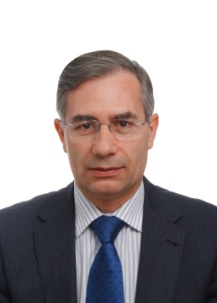
How should the EU encourage next-generation networks?.
Network industries have been national monopolies for decades, so introducing competition in these sectors has been anything but easy. Yet observers may view the liberalization of electronic communications as a successful process in Europe. European Union (EU) policy abolished special and exclusive rights for the provision of networks and services, facilitating the entry of new operators who provide innovative services at lower prices. In addition, ex ante regulation and competition law enforcement have led to much more competitive markets. The degree of economic efficiency and consumer satisfaction that we have achieved would be hardly imaginable under the traditional regime of exclusive rights.
There is no doubt that we are going in the right direction. However, we still have to adapt to new circumstances and learn from past experiences. We have to deal with challenging issues like fostering the deployment of next generation networks (NGNs), achieving greater efficiency of spectrum usage, protecting consumers, and finding the right approach to net neutrality. In other words, after almost fifteen years of full liberalization, we must ask what should we keep and what should we change in EU telecommunications policy to improve further services, enhance innovations, and increase benefits to consumers. To put it another way, the issue is whether regulatory policy can boost investment and competition at the same time.
In recent years, regulators have appreciably reduced ex ante regulation. National authorities have removed regulation from most retail markets and from some wholesale markets. However, ex ante regulation still shapes electronic communications. Mandatory access to the incumbent’s network at cost-oriented prices is the main regulatory remedy still applied. Despite complaints, NGNs are also subject to mandatory access, since the European framework neither foresees exceptions nor allows “regulatory holidays.” Local loop unbundling has given way to new forms of access, such as duct access or in-house wiring, which oblige the first operator that reaches a building to provide access, facilities, or fiber to competitors.
We can accept that mobile communications is a competitive market. At present, most EU Member States have a minimum of three or four mobile communications operators, each of which has its own infrastructure. States have also awarded spectrum rights for 4G services with territorial coverage commitments. Mobile virtual network operators increase competition in the sector, giving fixed operators the possibility to offer convergent services. In many cases, wholesale access to mobile networks can be deregulated on the evidence that it is offered on commercial terms to mobile virtual network operators. Prices, like in international roaming, are going down—frequently thanks to regulation.
From the beginning of the fixed communications market, the European authorities have tried to improve network competition, under an economic model called the “ladder of investment.” Todaythey have come to share the point of view that it is desirable to aim for facilities-based competition at the deepest level at which it will be effective and sustainable. Regulators, on the other hand, have come to accept that competition based on multiple providers deploying their own fiber networks in the same area is not likely to happen, and, even if it did, it would likely not be effective or sustainable.
If we look at the outcomes, authorities have achieved competition on services, mainly based on mandatory access to the incumbent’s network, termed local loop unbundling. The market share of incumbents in the fixed broadband market has declined to 45% and stabilized. However, network competition remains very weak. Most cable networks had been deployed before liberalization, while new networks have been rolled out only to a very limited extent. Investments in NGNs are still limited.
Incumbents have consistently claimed that mandatory access discourages investments in NGNs. Under this argument, the first alternative could be to phase out regulation, leaving the markets free to operate. However, at this moment huge investments cannot be expected, due to the financial crisis and the great uncertainties and risks that the sector has to face. On the contrary, if we agree that local loop is a natural monopoly, then we should apply vertical separation, as regulators did in the United Kingdom. However, separation is a remedy that is neither easy to apply or to withdraw. On the other hand, giving up competition in populated areas would limit economic freedom and would probably also hinder economic efficiency and innovation capacity. Taking these strengths and weaknesses into account, the best option could be fine-tuning ex ante regulation, seeking a much more flexible approach.
One of the first lessons for regulators is that telecom policy has to accept diversity. It seems clear that while we can expect network competition in highly concentrated areas, in rural areas the challenge is to ensure NGN access. It turns out that we need much more tailored geographic remedies, defining sub-national markets. Promoting competition has to be compatible with encouraging investments. The European Commission seems ready to accept a more flexible application of remedies to NGN services, in order to strike a balance between competition and investments incentives. It is necessary to maintain technology neutrality by providing operators as much room as possible to decide which technologies and network architectures to adopt. We also have to ensure a non-distorted intermodal competition. In this regard, it is also necessary to protect property rights. When migrating to NGNs, the incumbent cannot be obliged to maintain the copper network, unless it is compensated for.
Finally, in most parts of the continent, it may be very hard to find incentives for private investments in fixed NGNs. To address this market failure, we have four main alternatives: (i) regulation; (ii) stronger cooperation among operators; (iii) public provision of networks and services; (iv) and state aids. These alternatives do not exclude each other, but can and should be combined to achieve the most appropriate solution in each case. In difficult times, the European Commission seems to favor network investment from wherever it comes. However, it is necessary to ensure that remedies neither distort competition nor discourage the emergence of potential future competitors.




